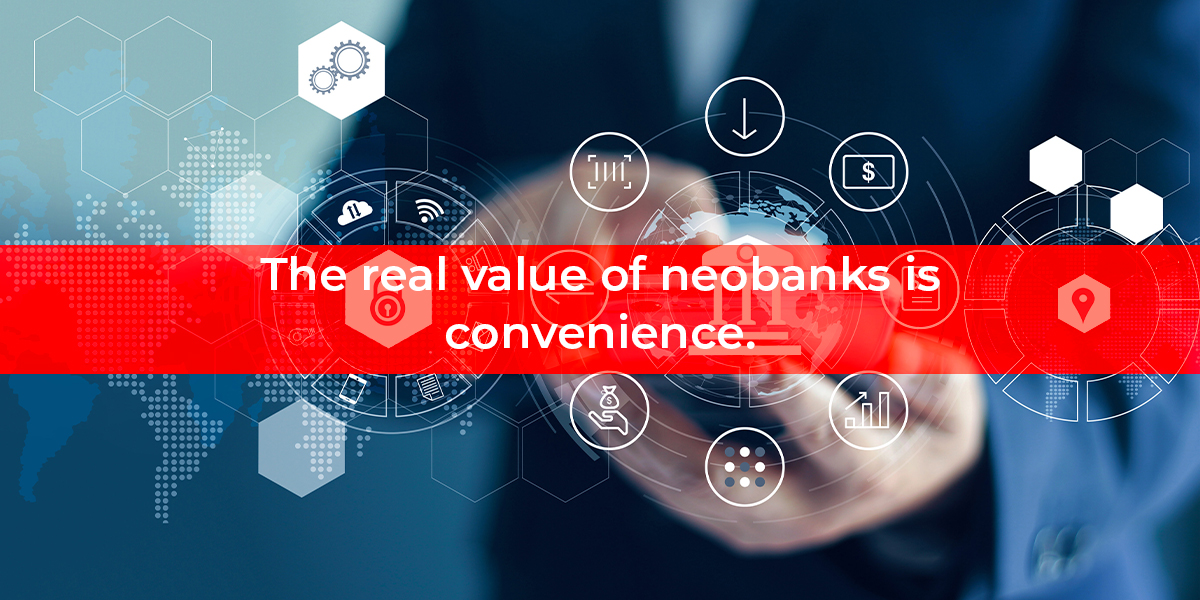It is the neobank that is today offering global banking solutions aimed to make cross-border banking smarter, faster, and better.
A neobank, also known as a digital-only, are banks and financial services providers who are not lumbered with legacy banking technology, and more importantly, a hugely expensive estate of branches.
They offer their services either online via the desktop or through a mobile app. Broadly speaking, there are two categories. First up is the full stack neobank; which is a standalone bank with its own license and can therefore operate independently. The second is classified as the front-end focused neobank; which tends not to have its own banking license and must work in partnership with a traditional bank to deliver its services.
The neobank has been born of past customer dissatisfaction with incumbent suppliers. High costs and cumbersome tech have accelerated the appetite for digital alternatives, no more so than in the service delivery of cross-border payments.
At the heart of the neobank is the customer and their desire for flexible banking and finance products and services. Traditional banks have simply failed to keep up with consumer demands and expectations. This is particularly prevalent amongst younger consumers, digital natives who expect and demand more from their service providers.
The market is growing and growing fast. According to some research in the US alone, there will be 47.5 million digital-only bank account holders by 2024, increasing at a 19.8% CAGR from 2020. Furthermore, US digital-only banks’ penetration will increase by 8.9 percentage points between 2020 and 2024, a picture to be replicated globally.
The banking industry avoided many of the effects of disruptive technology, which had driven change across sectors over the past few decades. But new cloud banking solutions focusing on offering digital access to banking activities have offered consumers more convenience and a better user experience. At the end of the day the consumer will no longer accept delayed cross-border payments in a truly digital, global age.
This does not mean that the incumbents cannot fight back. For many, they have the advantage over neobanks based on their funding and historic levels of customer trust. That said, legacy systems are holding them back, making it tough to develop innovative user experiences. The other side of the coin is that neobanks don’t have the money or customer base to displace traditional banking immediately. That said, they can launch new features and solutions and develop partnerships that consumers want and want quicker.
Neobanks are also driving market segmentation. Most will begin by focusing on providing customers with one product or service. They can outperform banks on customer service, products, and margin to bring it to market. It is this agile performance that has enabled the neobank to take the market share and challenge the incumbents no more so than in the provision of cross-border payments.
Neobanks are masters of data-driven decision making. They collect and analyze data, spot patterns and trends sooner, and can predict the behavior of consumers, and then go on to deliver highly personalized and customized services.
Neobanks today offer a wide range of financial services including:
- Cross border payments and money transfers
- Checking and Savings Accounts
- Loans
- Credit and Debit Cards
- Access to a wide network of ATMs anywhere
But what sets Neobanks apart from traditional banks are the innovative features and simplified processes they can offer. So, for example rapid account opening, free debit cards, instant payments, lower prices, cryptocurrencies, peer-2-peer transfer, mobile deposits, budgeting tools, user-friendly interfaces, and far more.
However, any discussion of neobanks shouldn’t be viewed in the binary. They are part of an ever-growing ecosystem that nourishes and feeds each other. Looking at the bigger picture, neobanks have opened a whole new route to the future of financial services, yet traditional banks have found a way to adapt quickly. Today with open banking regulations, we are already seeing neobank/bank collaborations.
The rapid adoption of neobanks gives us insight into the future of banking, which will see an immediate change in the coming years. Cloud computing and growing consumer trust in digital solutions are the start of a significant digital disruption throughout the banking industry.
For consumers the real value of neobanks is convenience. Account opening is easy and is done in minutes with minimal data requirements. But in this global world the real value for consumers lies in cross=border payments. With a neobank there is no differentiating line between national and international transactions. And unlike traditional banks, you don’t need to upgrade your debit/credit card to transact internationally.
Time will tell how popular the neo bank will be. There is no doubt however, that the pandemic has acted as a spur to digital transformation in the banking sector. For traditional banks and the new kids on the block, the neobank, one thing is certain – the customer is king and in the driving seat.

